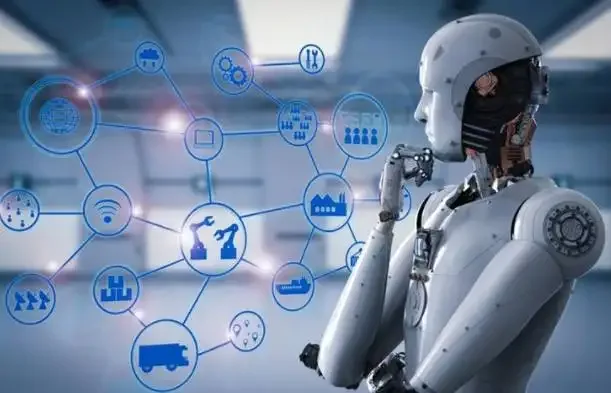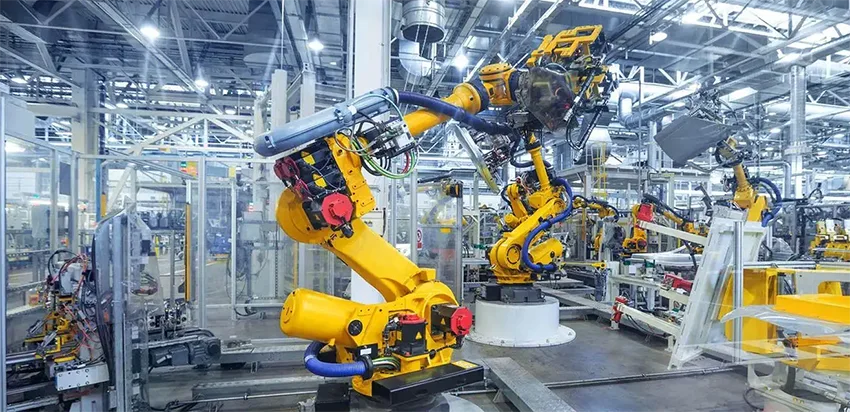Smart Automation is a series of strategic technology overviews from process automation to artificial intelligence, combining robotic process automation (RPA) with optical character recognition (OCR), intelligent character recognition (ICR), process mining, deep learning, machine learning, cognitive technologies, natural language processing, speech recognition synthesis, machine vision, and much other artificial intelligence (AI) to create end-to-end business processes that can think, learn and adaptive end-to-end business processes. It also covers the entire process from process discovery, and process automation to using data to manage and optimize business processes through automated and continuous data collection and understanding of the meaning of data.
What is Smart Automation?

Smart automation means that the needs of customers and users can be predicted with the help of automation technologies and artificial intelligence to get closer to the track of digital transformation for enterprises. As a result, institutions and their staff are able to be more concentrated on providing high-value tasks. For instance, enterprises can establish business relationships attached to emotions so as to offer a more interesting experience to customers and employees.
Smart automation shows the overall solutions of digital transformation, which is mainly based on Business Process Management that include coordinating users at any time based on business demands as well as Robotic Process Automation of tasks and systems. Additionally, it utilizes analysis and artificial intelligence(machine learning in particular) to develop automation and smart decisions to realize successful management from end to end.
Lastly, it is well-noted that the other key trait of the trend lies in the integration of different systems utilized by enterprises. The integration can help prevent the data of systems from occurring repetitively. What’s more, users can only need to work on one platform.
The Working Principles of Smart Automation

Smart automation is mixed up with several kinds of key technologies, which include process automation, machine learning, business process automation, smart routers and natural language processing. All these technologies are interconnected and widely applied. Also, they are parts of large plans for Digital Transformation.
Intelligent Capture
Smart capture is able to spontaneously identify and extract information from documents, either in paper or digital form. It is a mixture of Optical Character Recognition, Smart Character Recognition, Optical Mark Recognition as well as Barcode Recognition. By using the mixture, structural or non-structural data can be captured.
Workflow Automation
Workflow Automation is one type of software, which defines a series of tasks and automatically performs these tasks based on relevant procedures without the need to intervene manually. It constitutes one part of large management solutions of business procedures. These kinds of solutions are helpful to optimize business processes and offer real-time visibility so as to make wise decisions and offer better business services.
Machine Learning
Machine Learning forms a part of artificial intelligence, from which systems are learned from data, modes and deduction. This allows the systems to cope with emergencies with the fewest help from manual intervention.
The Process Automation of Robot
With the processing automation of robots, organizations are able to perform tasks on repetitive applications and systems. It can be integrated into the current IT systematic structures in a relatively fast and convenient manner, which brings about direct benefits like the reduction of manual tasks, elimination of data entry errors and reduction of turnaround times.
What are the technologies being used in Smart Automation?
It is comprised of four vital technologies implemented in relation to each other, so let’s break them down and give an explanation to the role every technology plays:
Business Process Management(BPM)
Business Process Management functions as a Process Automation Technology, which covers the effective coordination of personnel, a system and data. The aim of BPM is to ensure the solid basic structures of business and operation processes. Thus, it can be viewed as the foundation of an organization. Automation complicated processing requires a person to interrupt data entry and decision-making. The systems will be utilized in specific moments to control operation and data generation as well as data storage like calculation and the integration of data.
Robotic Process Automation(RPA)
Robotic process automation refers to a technology that aims to decrease manual intervention in the computer program.
Through the major interaction with “high-grade” applications, robotic process automation can perform work. These applications are relative to machine languages and program codes. In simple words, It is a kind of software that can simulate the interactive coordination between humans and normal computer applications.
Artificial Intelligence
Artificial intelligence stands for the devices which resemble the intelligence of people. In other words, it is the discipline that attempts to create a machine system that can achieve learning and deduction like humans.
Artificial Intelligence is comprised of various elements such as machine learning, deep learning, natural language processing, visual recognition, big data and so on.
Integration
One of the biggest pain points facing enterprises lies in the connection and integration of systems since each system or software contains its own traits.
They usually provide an interactive application programming interface (API) that is typically based on some standards such as SOAP (applied in Web services) and REST (based on the HTTP protocol).
What are the strengths of Smart Automation?

Business values can be enhanced by lowering costs and boosting speed accuracy as well as transparency. Automation directed by machine learning, deep learnings, computer visions, text analysis as well as Chatbots is going to exert the greatest influence on the operation process such as user communication management, data capturing, business procedure management and case management.
Employees’ experience can be enhanced and staff is allowed to pay more attention to works with higher values by minimizing repetitive manual tasks and eliminating bottlenecks at the right times. In shifting to be more strategic and focused on building relationships (what technology and machines can’t do), employees play an unprecedentedly vital role in the entire digital transformation process.
Suitable users can receive the right information provided by the system at the right times to boost their experience (and the experience of all stakeholders). Using intelligent automation enables organizations to think over the competition by reinventing the businesses and driving new deliverables in order to boost the customer experience.
What are the real cases of Smart Automation?

With the implementation of robotic process automation in various industries, the scenarios covered by RPA have extended from rule-based, simple tasks automation to complicated process automation that is in need of Artificial Intelligence capabilities.
Compared with traditional RPA, AI-enabled RPA has more advantages in reading unstructured data, helping to make decisions, ensuring the accuracy of performing tasks and bridging human-robot interaction tasks.
Finance Scene: Receipt Treatment
Commodities sold in stores require customers to pay at the mall payment counter and return the second link to the store after completing the payment. The mall and the store will periodically settle the payment through the card records from the POS machines. In this process, stores have to reconcile the sales records in the system with the actual payment amount (i.e. the number of small bills), which includes a lot of data and a lot of manual reconciliation work.
RPA plus AI can realize automatic processing of financial receipts. UiBot Mage recognizes the electronic version of small bills, extracts vital information such as the date and sales volume, and reconciles the recognized information with sales records in the system.
Even if a small receipt contains sales records for multiple items (e.g. six small receipts corresponding to ten sale records), the RPA, combined with AI robot, can perform reconciliation in an accurate way.
Manually, only a very small number of unaligned accounts need to be handled, significantly decreasing the manual reconciliation workload.
Legal Service Scenes: the extraction of contract information
The contract text is typical unstructured data, and generally requires manual entry of structured information into the contract management system. Even with the traditional “OCR recognition plus information extraction”, the average recognition accuracy is only around 75%. What’s more, a large amount of rules have to be written to collect the information.
With the combination of RPA and AI, it can intelligently extract crucial information such as a contract name, a party A, a party B, subject matter and quantity.
A company’s legal department has to deal with 3 contracts with completely different templates and contents (plain text, text plus table, text plus image, horizontal and vertical versions), which are time-consuming and laborious to handle manually.
UiBot Mage conducts analysis of the picture content with the help of document and form recognition to automatically extract the elements of contract information, providing an out-of-the-box solution for the contract management procedure, which not only lowers corporate labor costs but also decreases the risk caused by human operation errors.
Bank Scenes: handling forms of users’ bank accounts
A bank processes 3,000 manual account opening forms from users every day, requiring employees to manually enter the form data 3,000 times.
With the wide application of RPA in the banking field, 500 forms can be handled automatically through the Robotic Process Automation. However, another 2,500 forms need to be processed manually because the manual writing finished by users is not fully standardized.
With the addition of Artificial Intelligence capabilities, the Robotic Process Automation can dramatically raise their understanding and are able to automatically handle over 2,800 of the 3,000 account opening forms, which is not only more accurate but more efficient. Therefore, fewer than one-tenth of the rest of forms needed to be processed manually.
Financial Scenes: Know Your Customer Procedure
KYC (Know Your Customer) is an important compliance process in the financial industry. Banks, insurance, securities and other institutions need to collect customer data, verify customer identity and background, and validate customer information to fully understand their customers.
Most of this customer information comes from different documents and different system platforms. It takes at least a week for employees to manually process the data for verification.
RPA, combined with AI, automatically identifies and reads data, collects customer information across systems, and verifies and reviews customer information with pre-defined parameters to filter out suspected fraudsters. Employees can spend only a few minutes completing the verification and validation process, which not only enhances processing efficiency but also saves a lot of time.
Government Affairs Scenes: handing high-frequency matters on the integral window
RPA plus AI is an important technical means to help connect the system platforms of different government departments, open up data sharing, make the business process more convenient and efficient, and empower the digital transformation of the government.
Take the service matter of “sewage discharge into the drainage network permit issuance filing” as an example: the entire business process requires a large amount of information and low fault tolerance rates, which requires more than 60 repetitive operations per day. Therefore, it is time-consuming and labor-intensive.
With the help of RPA plus AI, the window staff only need to enter the credit code of the applicant units. Then the robots will automatically search the required information to complete the entry and print, and automatically scan and sort and file after the staff approved the seal. The whole process can be finished in two minutes, and the speed is constant with low error rates.
Power Scene: the process of smart electricity
In the planning of each power grid company’s vigorous construction of intelligent electricity consumption process, RPA plus AI is applied to electricity consumption application data review and entry, electricity consumption data monitoring, electricity bill collection, automatic processing of electricity consumption complaints, intelligent customer service of electricity consumption and other process links to realize scientific statistics of the whole electricity consumption process, so that end terminal users can use electricity conveniently and quickly.
















